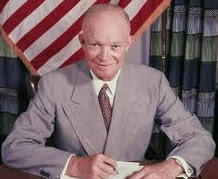In
a few days, I’ll post a professional appraisal of Pierce’s inability to hold
his tongue during the war. For today’s post, I turned to my friend
Michael Birkner, a Gettysburg College historian, for a peek at Buchanan, his
fellow Pennsylvanian.
 |
| Quist and Birkner's new book |
With
John W. Quist, a historian at Shippensburg University, Birkner has just co-edited a book of essays on various aspects of the Buchanan presidency. The title
is James Buchanan and the Coming of the
Civil War. For anyone interested in the political crisis that led to the
war, this is an excellent primer – and good reading, too.
One
of my favorite chapters is an edited transcript of a 2008 panel discussion
moderated by Quist and including two sages of 1850s American politics, William W.
Freehling and Michael F. Holt. The discussion is not only crisp and enlightening; it's also funny.
Just
one example: To a question about the prospects of slavery expansion into the western
territories, Holt ends his answer with this observation: “If you draw the 36-degree,
30-minute line and extend it to the Pacific Ocean, as Buchanan wanted to do in
the 1840s, it would hit the Pacific Ocean at the 18th fairway of the Pebble
Beach Golf Course.”
Michael
Birkner wrote the book’s epilogue, “Buchanan’s Civil War.” I asked him this
question about it:
In your essay on Buchanan’s life
during the Civil War, you identify his main preoccupation as shoring up and
burnishing his reputation as president. What might he have done differently to
stave off the war, and how effective a case did he make in his own defense on
this issue?
Here
is Michael’s answer:
In
sitting for interviews recently in connection with the opening of his
presidential library, George W. Bush was repeatedly asked how he thought
history would judge him, especially on his Iraq policy. Bush’s response was characteristic of the man: he wasn’t going to second-guess
himself. He would let the historians sort things out. He was not worried about
it.
What
a difference from the approach of the 15th president, James Buchanan, during
his retirement years!
 |
| Michael J. Birkner |
Elected
on the promise of defusing sectional tensions and quelling “agitation” on the
slavery question, Buchanan departed the White House in March 1861 with tensions
at fever pitch and the Union broken. Barely a month later, secessionists in
South Carolina opened fire on a few “brave and hungry men” led by Major Robert
Anderson at Fort Sumter. And the great war came.
“It
was not my fault,” Buchanan repeatedly told family, friends and all who asked
about his role as president in the events leading to war. If there is any
thread that runs through Buchanan’s retirement years (1861-68), it is his
determination to vindicate his conduct as president in all particulars,
especially the secession crisis.
Mike
Pride asks what Buchanan could have done differently, if anything, to stave off
the war. This question goes to the heart
of a central, ongoing debate among scholars about the degree to which the Civil
War was inevitable, and the degree to which it was brought on by blundering
politicians like Buchanan.
My
own sense of the matter is that both answers have merit. There’s no doubt, for
example, that Buchanan’s patently unethical intervention with the justices
deciding the Dred Scott case was a blunder that cost him political capital. His
vindictiveness toward Illinois Sen. Stephen A. Douglas (who had campaigned
faithfully for him in 1856) was another blunder.
Buchanan’s
stubborn and misguided policy on Kansas, in which he sided with a small minority
of slave-owners there on technical grounds as they sought to make Kansas a
slave state, was probably his greatest mistake of all. It split the Democratic
Party on sectional lines and thereby paved the way for the election of Abraham
Lincoln in 1860. Lincoln’s election triggered southern states’ secession and
made the war inevitable, given that Lincoln was not going to compromise on his
fundamental principle of no slavery extension, period.
What
if Buchanan had not blundered as he did? Would the war have happened anyway?
We
cannot know that for sure, as there are no do-overs in history. However, it
seems evident that if Buchanan had taken a more even-handed line on the slavery
question, and had he accepted popular sovereignty in Kansas, he would have been
assailed and rejected by southerners, just as Douglas was when he fought
Buchanan’s pro-southern Kansas policy. Consequently, whatever Buchanan did, the
Democratic Party would have divided, the Republicans would have gained the
White House, and the war would have happened.
Did
Buchanan make a good case for himself in his memoirs, published early in 1866?
Not
by my reckoning. His refusal to see fault in anything he did, his legalisms,
and his stinging attacks on abolitionists as the cause of sectional tensions
(while letting slave-owners off the hook) do not pass a credibility test.
It
seems fair to say that controversial presidents are wiser to follow George W.
Bush’s approach than James Buchanan’s. Self-justifying
memoir or no, Buchanan has occupied the basement among presidents ever since he
left office. With Bush, time will tell.



















